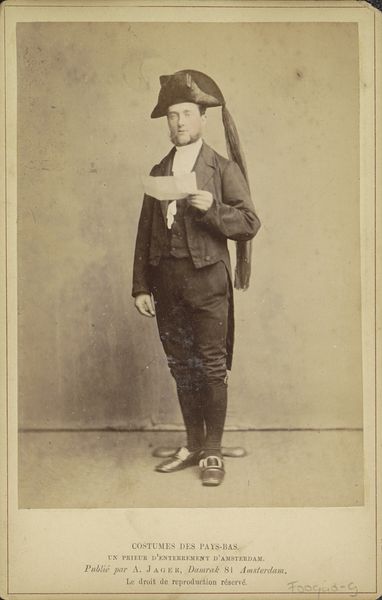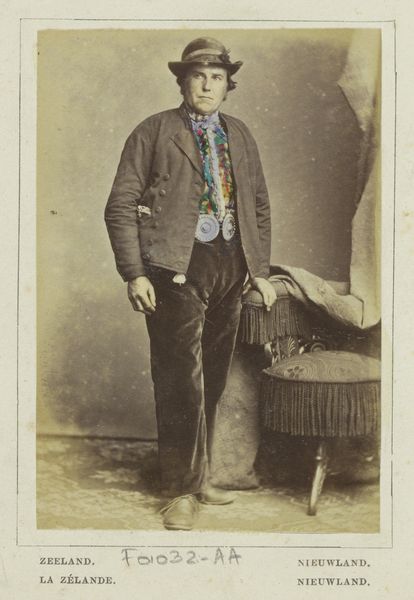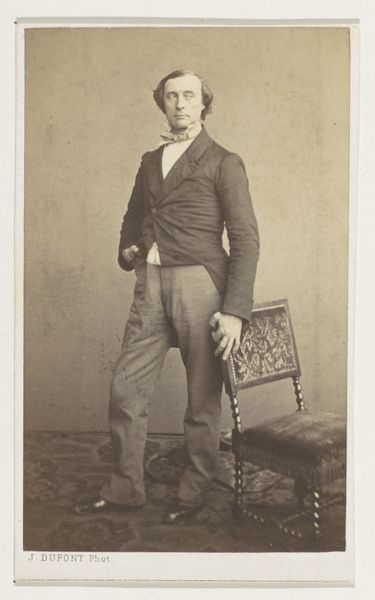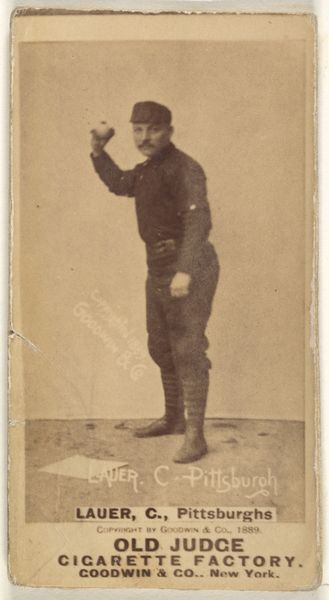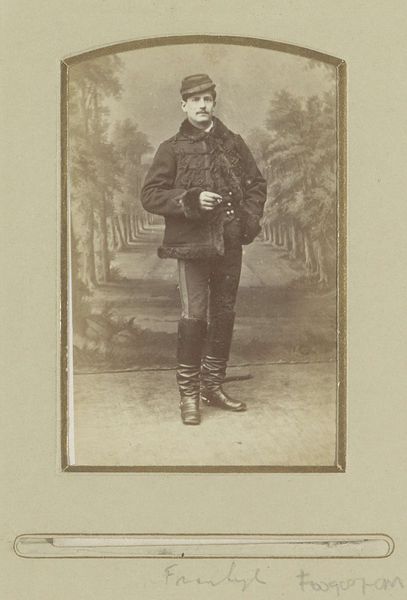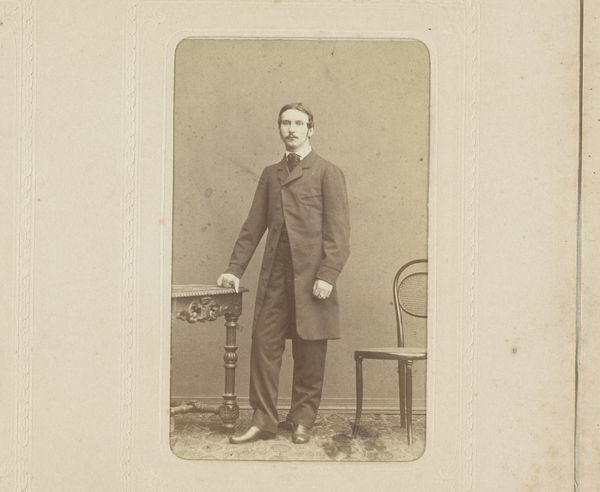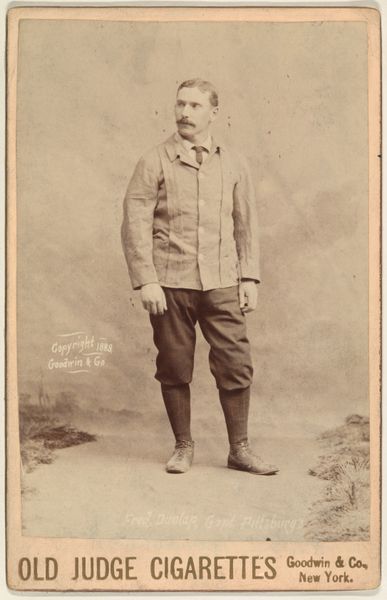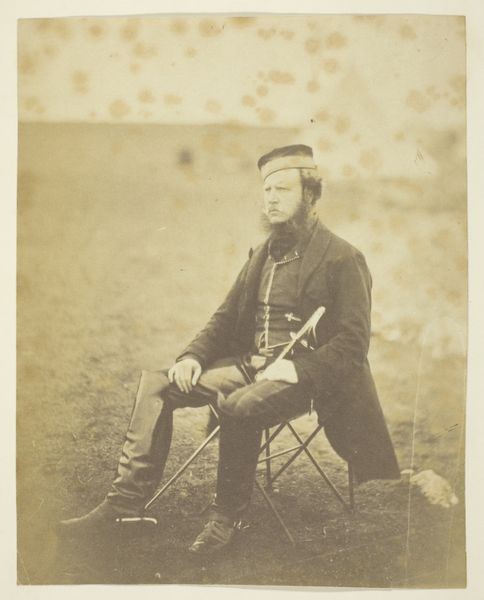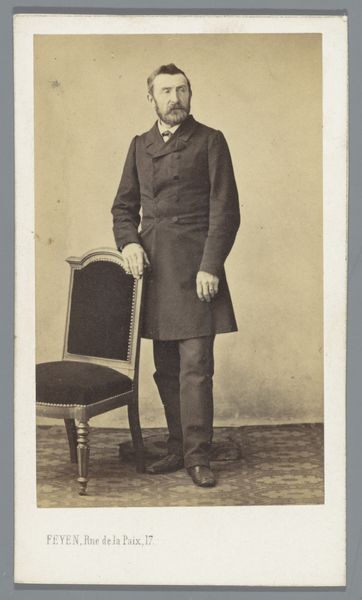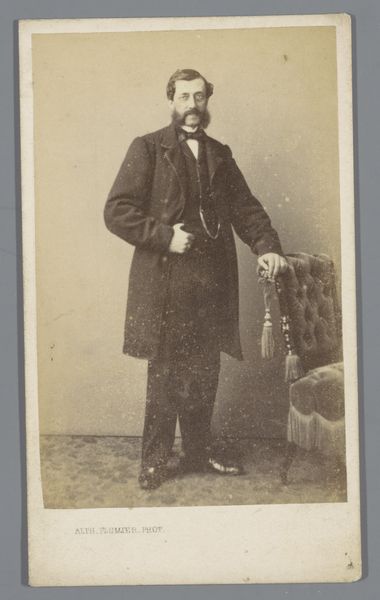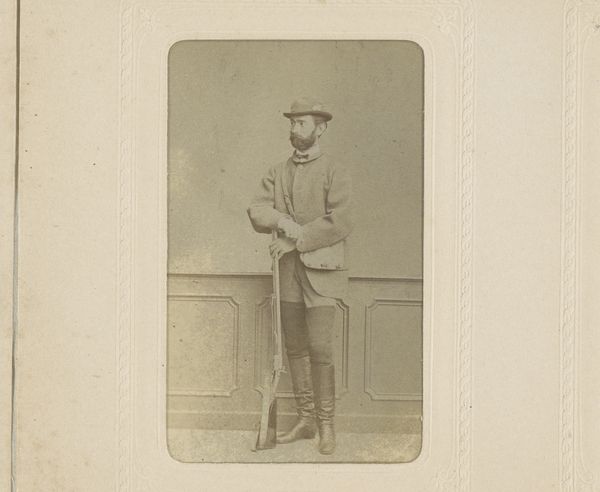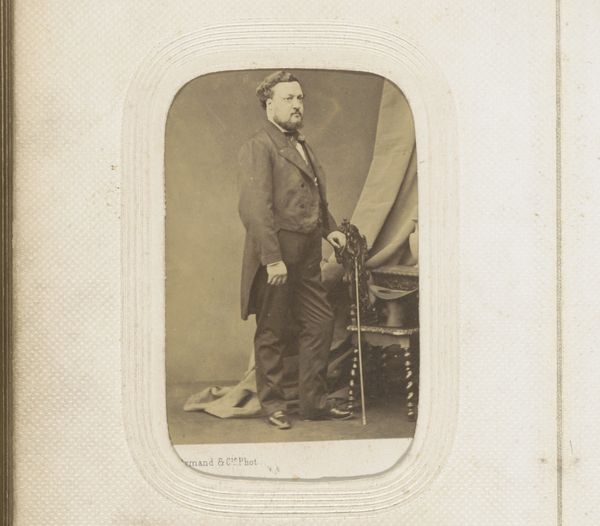
Portret van een onbekende postbode uit Amsterdam, Noord-Holland 1860 - 1890
0:00
0:00
photography, gelatin-silver-print
#
portrait
#
dutch-golden-age
#
photography
#
historical photography
#
gelatin-silver-print
#
realism
Dimensions: height 87 mm, width 58 mm
Copyright: Rijks Museum: Open Domain
Curator: Standing before us is "Portret van een onbekende postbode uit Amsterdam, Noord-Holland", a gelatin silver print photograph created sometime between 1860 and 1890. Editor: There’s a melancholic feel to it, a quiet dignity. He’s posed, almost stiffly, in his uniform. Curator: Absolutely, there is an inherent sense of authority evoked by the postman’s uniform, and his direct, almost challenging gaze. How does that resonate in relation to broader power structures of the time? The role of the post office within the political economy? Editor: What strikes me are the subtle visual cues. The badge catches the light, that glimmer hints at status, linking him to the broader symbolism of the postal service as a trusted messenger. Letters were lifelines. Curator: His profession intersects with issues of literacy, class, and access to information. The unseen recipients of his deliveries might reflect a divide in society that he is positioned directly within, yet paradoxically separate from. The act of receiving a letter in that era carried its own socio-economic weight, didn’t it? Editor: Consider the visual language: his meticulously groomed beard speaks volumes about the social conventions and ideals of masculinity prevalent at that time. It underscores a sense of pride in appearance and profession. What messages did codes of dress communicate then, about labor and social standing? Curator: Precisely. His presentation isn't merely about aesthetics. It's performative in some respects, projecting a very specific image for public consumption in an increasingly urbanizing Amsterdam. Editor: It seems to go deeper; a single photograph connects with deeply embedded memories, from revolutionary correspondence to tragic war letters. What enduring role did they play in personal identity? Curator: This photo, beyond its formal aspects, offers an invitation to reflect on labour and class dynamics in the Netherlands at the end of the nineteenth century. How these individuals were positioned within a burgeoning urban landscape Editor: The photograph, in its own way, preserves fragments of social narratives and long forgotten memories, ensuring that a letter never truly gets lost.
Comments
No comments
Be the first to comment and join the conversation on the ultimate creative platform.


